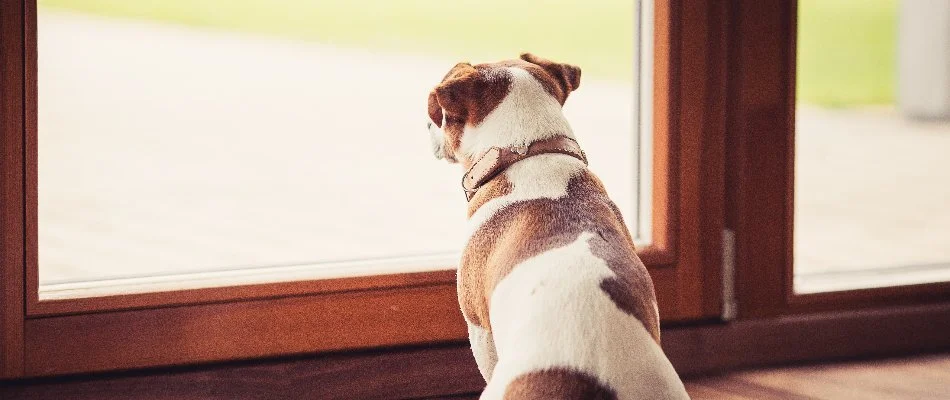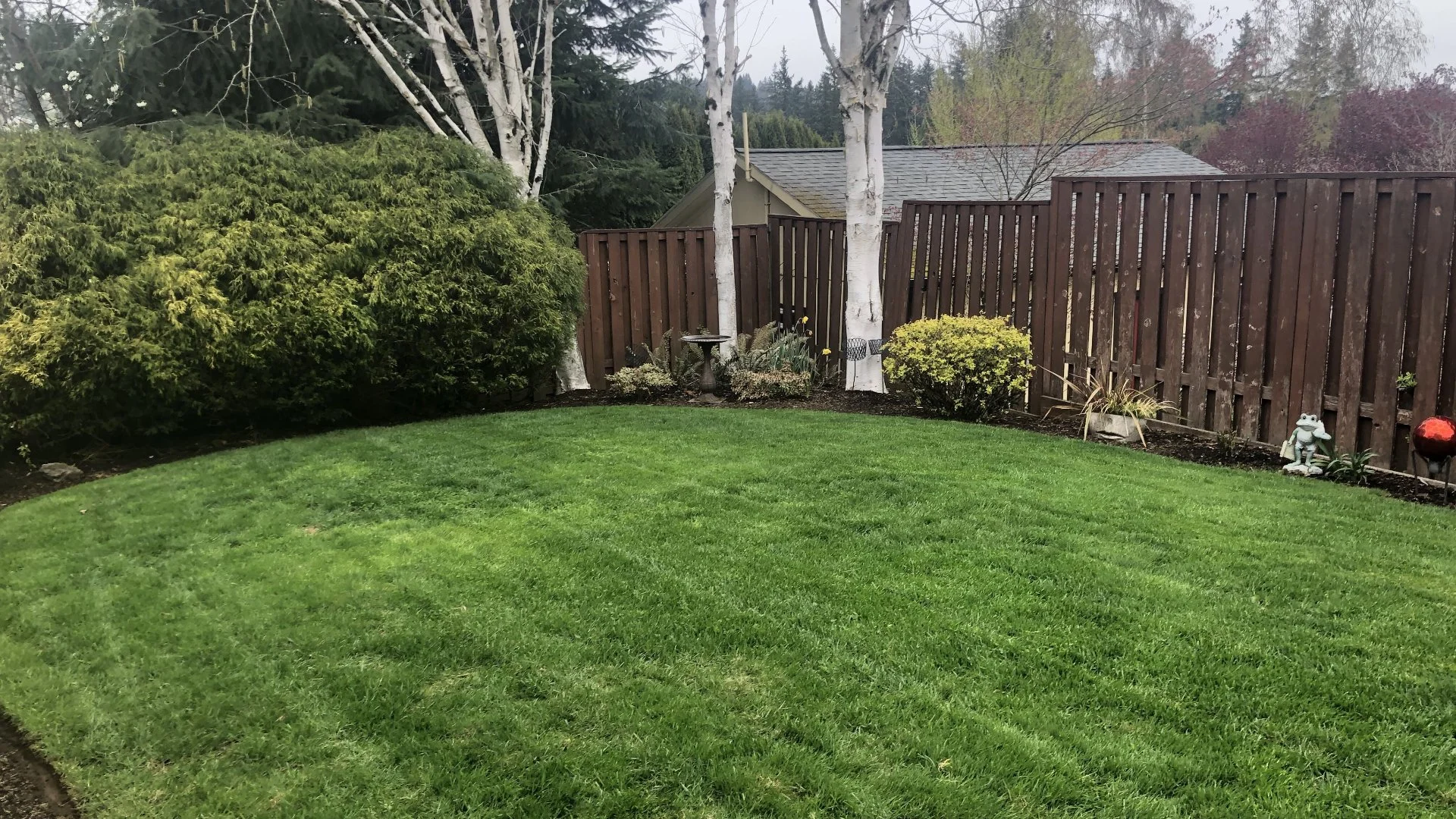Regular lawn fertilization treatments keep your grass in Oregon in tip-top health. If you have pets on your property, there are certain guidelines you'll want to follow to keep them safe during treatments. First off, it's crucial to keep your pets indoors before the treatment to keep them from coming into contact with and ingesting the product and any harmful ingredients it may contain. You should also wait for the fertilizer treatment to completely dry before letting your pets out again, but the waiting time will vary depending on different factors, like the type of fertilizer used and the weather on the day of application. What's more, you'll want to talk to your lawn care provider about pet safety because they'll have valuable information about the specific fertilizer treatment they use and useful tips to keep your pets safe!
Make sure your pets are inside prior to the lawn fertilizer treatment.

During a scheduled lawn fertilizer treatment, you'll want to keep your pets indoors to ensure their safety during the application. Lawn fertilizer treatments may contain chemicals that may be harmful to your pets. By keeping them indoors, you can ensure that they don't come into contact with the treatment and potentially ingest ingredients that may do them harm.
Keeping your pets indoors will also allow your lawn care service provider to do their job efficiently. They can easily move around your yard without worrying about getting in the way of your pets. This way, the professionals you hire can focus on treating your lawn and ensuring the fertilizer is evenly administered to yield good results!
Wait until after the fertilizer treatment dries before letting your pets back outside.
After the lawn fertilizer treatment has been administered, there's a certain waiting time that you have to observe before letting your pets back outside. The goal of waiting before allowing your pets out is to let the fertilizer treatment dry. However, the drying time will vary depending on several factors, like the type of fertilizer used and the weather on the day of application.
Lawn fertilizers typically dry quicker during sunny days compared to cloudy with the sun's warmth speeding up the process. The type of fertilizer used will also affect the drying time. Liquid fertilizers usually take less time to dry as opposed to their granular counterparts. That's because granular fertilizer treatments have to be watered in to activate, making the waiting time longer.
Always Talk to Your Lawn Care Provider About Pet Safety
A reliable way to ensure pet safety during lawn fertilizer treatments is to talk to your lawn care provider! They are familiar with the specific fertilizer treatment they have administered on your lawn and can provide useful insights about it like the time it usually takes to dry up. Your lawn care professionals will likely have the training and extensive knowledge of the fertilizer treatment and its ingredients, so they know which components will be bad for your pets. You can also let them know that you have a pet on your property, so they can advise you when they will visit your property. They'll be able to provide tried-and-tested tips on keeping your pets safe while your lawn receives fertilizer it needs for its growth so you never have to choose between pet safety and healthy grass!
Call us today to sign up for our lawn fertilization service!
Here at J&C Lawn Care, we offer a lawn fertilization service to properties in Gresham, Happy Valley, Troutdale, Fairview, Sunnyside, and nearby areas in Oregon. Our team uses a slow-release fertilizer treatment that will provide your grass with a steady supply of nutrients until we visit your property again. We'll also ensure your lawn receives fertilizer treatments through spring, summer, and fall. Call us today at (971) 284-2035 to sign up for our lawn fertilization service!



Comments (0)
Thanks for your comment!
Thanks for your feedback! Your comments have been successfully submitted! Please note, all comments require admin approval prior to display.
Error submitting comment!
There is a problem with your comment, please see below and try again.